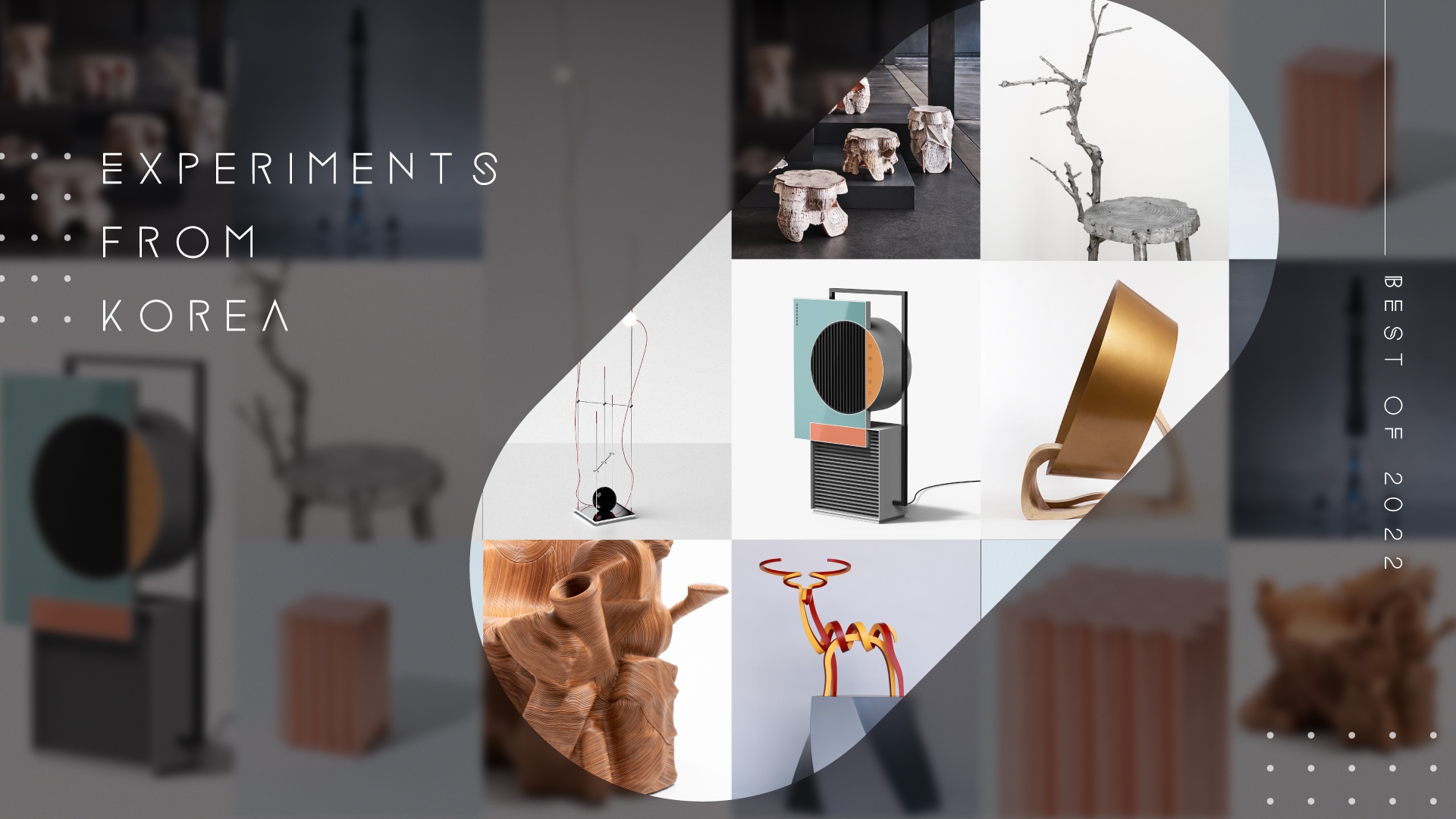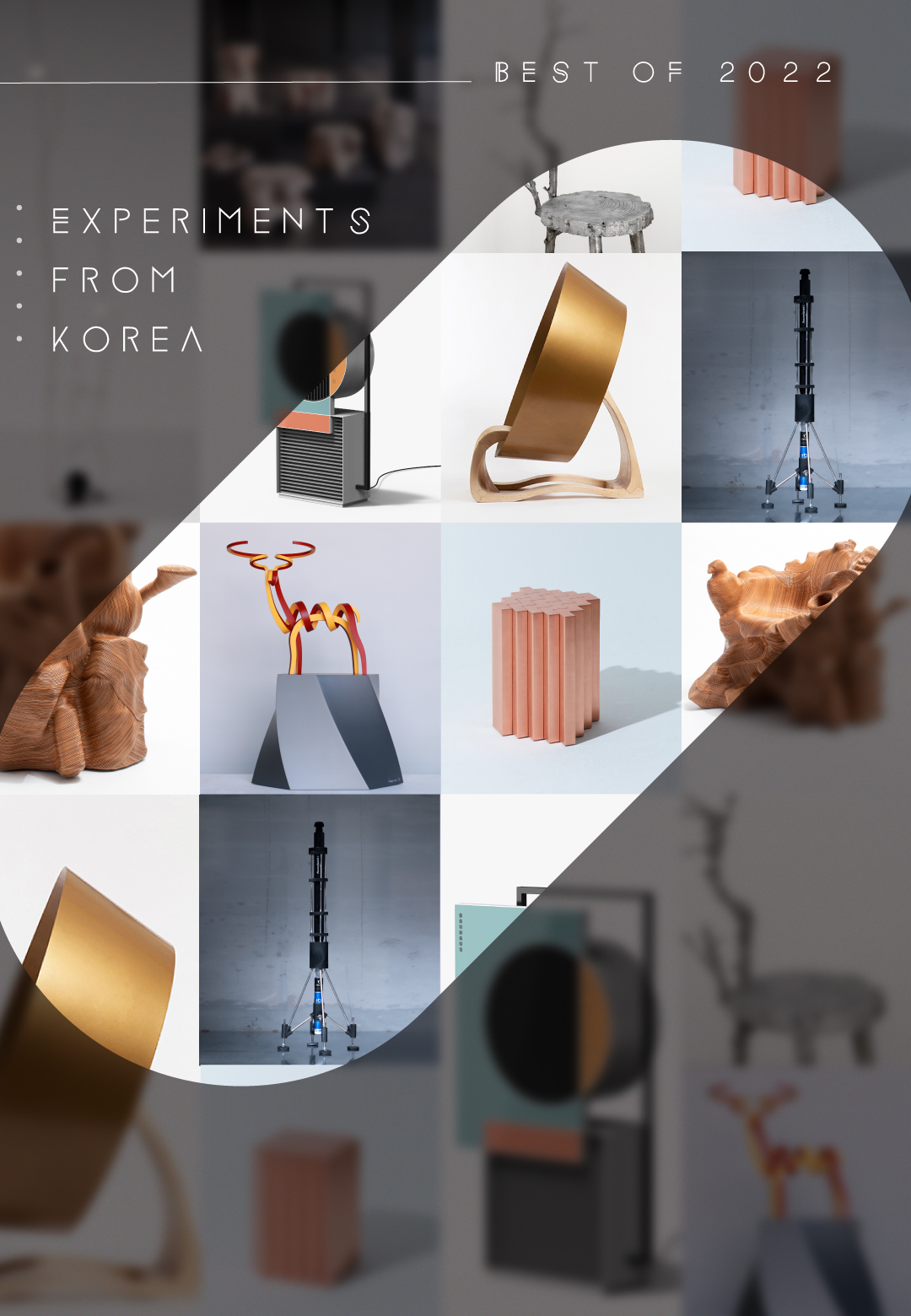In recent years, Korea has emerged as a strong contender in the creative industry owing to the the Korean wave (aka hallyu). While Korean films have remained top finalists at popular international awards such as the Oscars, K-pop groups such as BTS and Blackpink have won the hearts of music enthusiasts across the globe, and Korean drama series have enraptured audiences across borders. A lesser-known but equally dynamic and distinctive industry is the one graced by product designers, furniture designers, artists, and sculptors. Evolving with the times, Korean creatives encapsulate their ideas and concepts in works that are well-placed against their geographical location, social contexts, and contemporary aesthetics.
Foraging through myriad creations, STIR highlights the Best of 2022, with a special focus on some of the experimental endeavours explored by Korean designers and artists this year.
Compositional series by Jeongseob Kim
Jeongseob Kim, an artist, designer, and craftsman based in South Korea, uses commonly found materials to build minimalist furniture. He sculpts atypical silhouettes using conventional patterns and easily available materials. Defined by straight lines, clean edges, and a lustrous finish, the stools, benches, and shelves making up the Compositional collection are a culmination of the designer’s thoughts, ideas, and favourite forms. Although the pieces are shaped in mundane and typical moulds, the sheen of the copper, stainless steel, and aluminium used to craft them, renders them supramundane. Kim intends for his Compositional pieces to stand out in interior spaces, unlike generic furniture that populates homes. The steel furniture complies with Kim’s vision and presents itself as objects featuring as anomalous entities.
YehRim Lee’s tables and stools for Kelly Wearstler’s Autumn 2022 collection
California-based ceramic artist YehRim Lee’s furniture design—for American designer Kelly Wearstler’s eponymous design studio—is the result of her intensive and obsessive process. Known for creating ceramicwares that straddle the arenas of sculpture design and furniture design and bears imprints of an elaborate process of firing, re-firing, and glazing, Lee’s objects can be typified under organic design. This dissonance—-between the organic form of the objects and their heavy processing—is evocative of the layered personality associated with natural entities that have survived through time and circumstances. Lee’s latest forays in ceramic art for Kelly Wearstler’s Autumn 2022 collection comprise a series of stools, of different sizes. Inspired by traditional Korean practices in ceramic, specifically the onggi hand-building technique, the objects are a marriage of archaic techniques and textures and abstract configurations associated with contemporary art.
Neo-Primitive by Lee Sisan
Neo-Primitivism, an art movement popular in the early 20th century, concerned itself with creating experimental artworks that challenged the modularity of industrial design, while also ensuring that they convey a visceral emotion or idea. Evoking a similar spirit, Korean industrial designer Lee Sisan’s Neo-Primitive collection, comprising a table, chairs and stools, mirrors the silhouettes of twigs and branches. Sisan finds inspiration in nature and its accoutrements, and tries, hence, to infuse their aura and appearance in his work. The Neo-Primitive objects, crafted out of silver-white aluminium, are usable as sculptures and furniture. In apprehension of a calamitous future where natural entities might fade away, Sisan aims to contain the beauty of nature in industrial objects, for posterity.
Bauhaus air purifier by Lee Keereem
Taking its name and inspiration from Bauhaus—the 20th-century design movement that simplified decoration by bringing simple shapes and colours to the forefront—Lee Keereem’s air purifier is a balanced design. While the first design created by Keereem is a playful contrast between black, saffron, and cyan, later iterations by the designer are monochromatic, tending to designated auras and themes, namely Forest Sunlight, Rape Flower, Pure Snow, and Silent Night.
The Breeze Lamp by Jinhyeong Kwon and Hochan Yoon
The Breeze Lamp, as the name suggests, dances with the breeze. The movable components of the lamp, fixed on a sturdy and immovable stainless steel skeleton, oscillate, along with the luminaire, hence turning the object into a dynamic and lively entity. The minimalist object, made up of thin stainless steel wires and stands, is rendered charming with the juxtaposition of the linear and curvy lines that make up the lamp design. Serving as a paradox to the idea that light-emitting celestial bodies are supposed to be static, the circular bulbs that form part of Kwon and Yoon's lighting design appear to levitate and swing at the slightest disturbance. The design of the lamp ensures that any kind of bodily movement done in close proximity of the lamp will also reflect in the Breeze Lamp.
Post-Collapse by Beomseok Chae
Beomseok Chae, a Seoul-based designer, envisions through the Post-Collapse collection, a world where contemporary ideas and concepts are stagnant. The lamps, stools, storage units, hangers, and accessories making up the collection are inspired by futuristic aesthetics, as portrayed in science-fiction comics, films, and popular culture. Cuing his creations as a by-product of a future calamity or phenomenon, the designer calls them ‘Post-Collapse’. Each object in the series mimics the rich industrial aesthetic of dystopian interiors. The Post-Collapse series serves as a commentary on the fast changing dynamics of our world. Presented as usable furniture that can alternate as sculptures, they intrigue the eye and the mind and invite people to come and explore, touch and interact with them.
Animal Sculptures by Lee Sangsoo
Lee Sangsoo’s series of animal sculptures serve as an ode to animals and their evolution through the ages. They mirror the appearance of horses, flamingoes, deers, pigs, parrots, horses, swans, poodles, and cats, among other animals. The visage of the digital and physical sculptures is, however, minimalist, characterised as they are by sinewy and coil-like lines. Sangsoo initially sketches out his ideas digitally. He experiments with their form and structure, and finally, turns them into physical three-dimensional structures of varying sizes. The Korean designer uses plastic to build the small animal sculptures and stainless steel tubes to craft the larger ones. The vastness of the animal kingdom affords Sangsoo the liberty to expand on this sculptural series, which is slowly growing, in number and presence, across various locations.
Savage series by Jay Sae Jung Oh
The Savage series by Seattle-based designer Jay Sae Jung Oh comprises a collection of objects crafted out of discards such as plastic, leather, and hemp. Deconstructed, yet configured into usable furniture, her designs serve as suitable examples of a charming juxtaposition of experimental art and pragmatic design, expressionism and practicability.
Goyo Chair by Lee Ye Chan
Crafted using maple wood and steel, the Goyo chair is an experimental design by Lee Ye Chan. Playing on the concept of the traditional Tibetan singing bowls, the Goyo chair presents itself as an object that facilitates meditation. Cradled within the bowl-shaped steel enclosure, one can experience the reverberation and listen to the meditative sound that elicits a tingling sensation and promotes healing.






 Sign in with email
Sign in with email










What do you think?